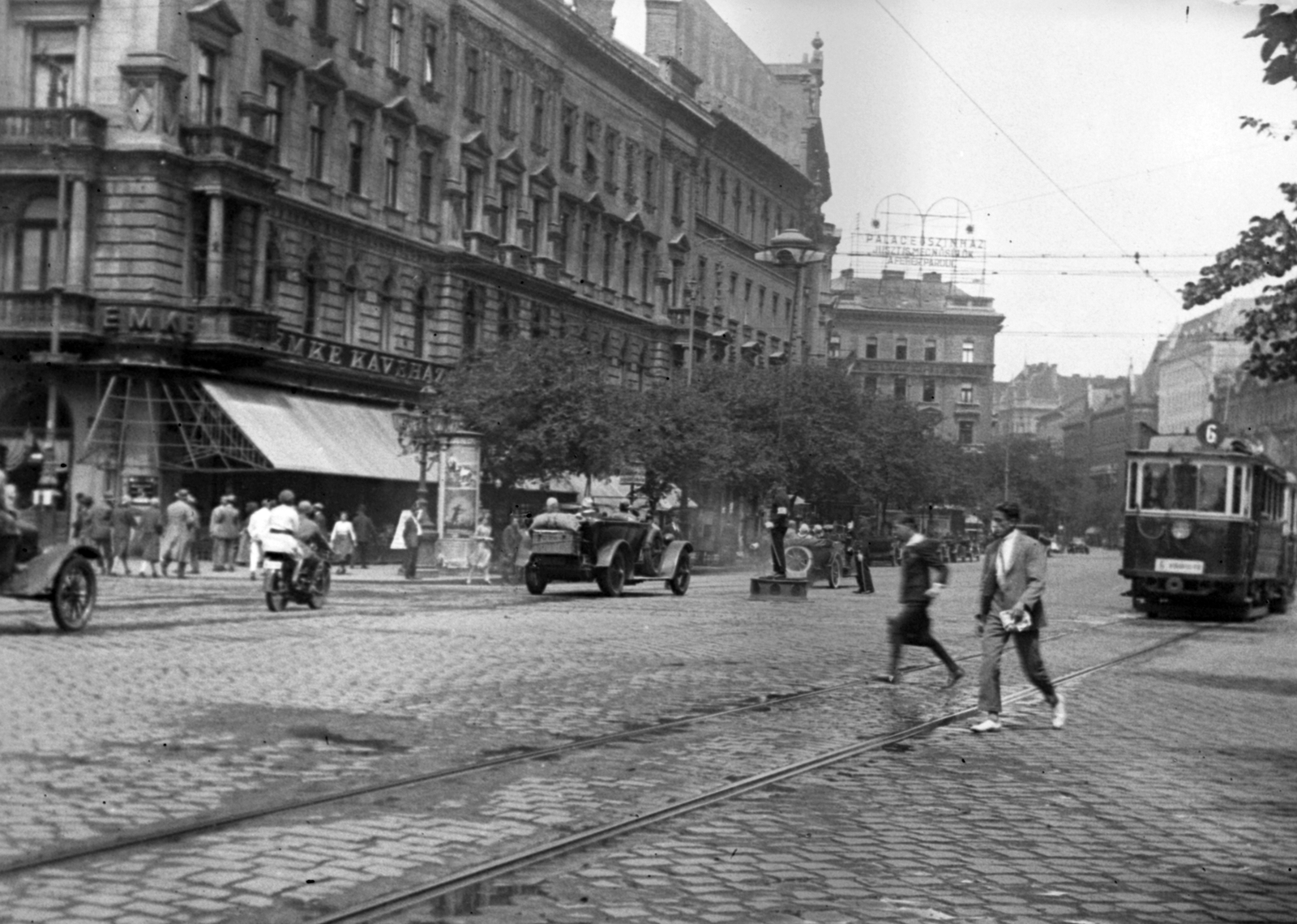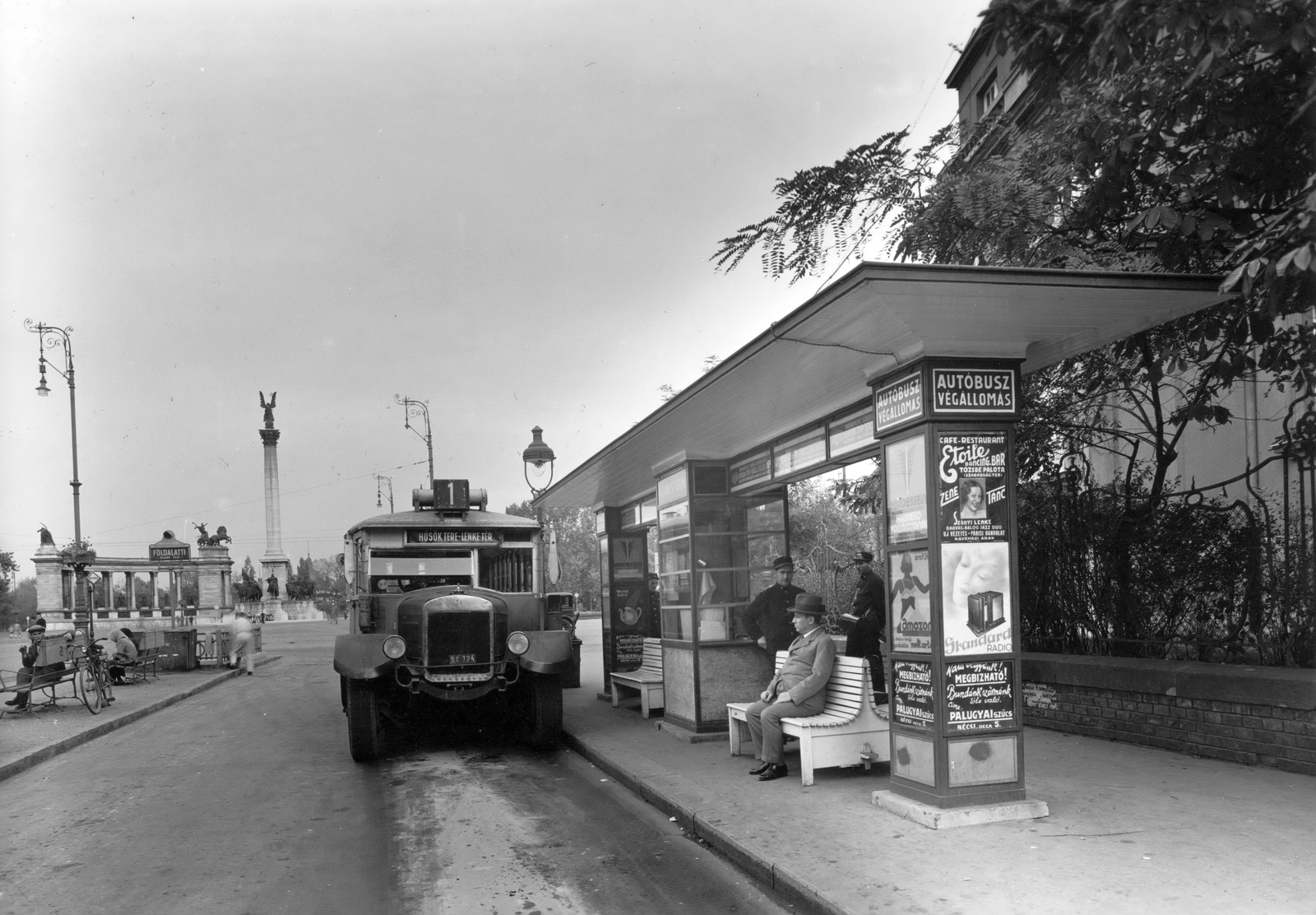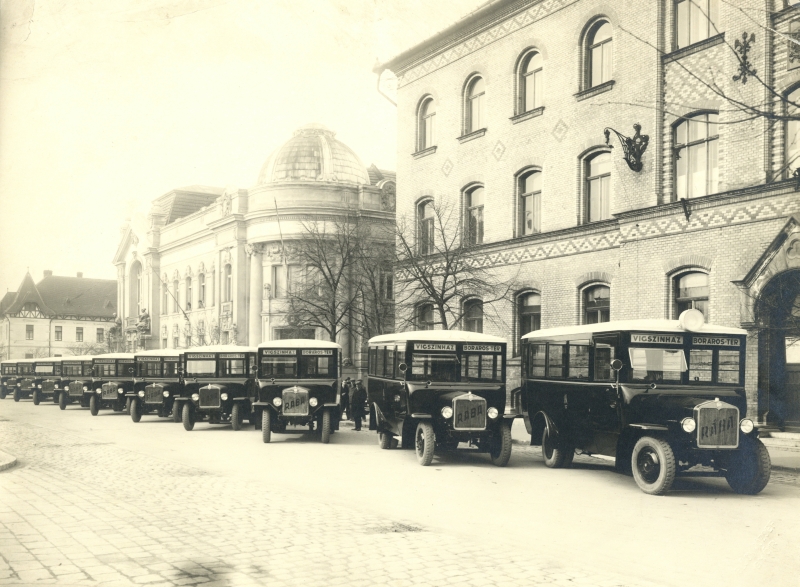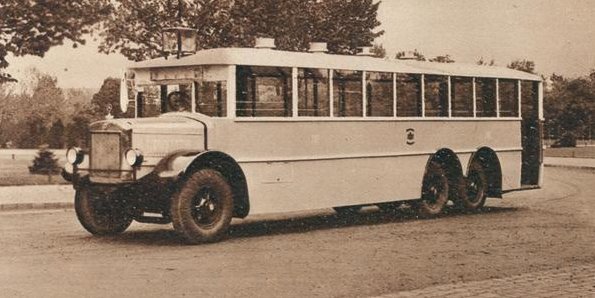Despite the fact that the tram line on the Outer Ring Road was practically built by 1896, its capacity was insufficient by the 1930s. Therefore, the travelling public of Budapest was very pleased that in 1932, in addition to the tram, there was already a bus on the Outer Ring Road, between Boráros Square and the Vígszínház.

For a long time, on the Outer Ring Road there were only trams, but in the early 1930s it was no longer enough (Photo: Fortepan, Urban Collection)
When buses appeared in Budapest after World War I (although they ran between 1915 and 1917, the service ceased to exist due to the war), the basic principle was that buses should travel where there is no tram. As the tram network was much better in the inner city of Pest at the time, buses were pushed off major roads. This situation was summarized by the Budapest Council as follows in the issue of the Fővárosi Közlöny of 12 February 1932:
“The routes of the buses on the left bank of the Danube can everywhere run through the boulevards or the side streets running parallel to them, and thus these radial lines are concentrated in the city centre without being connected by the regularization of a bus line running in a transverse direction. This shortcoming has created a situation where passengers on buses traveling in the radial direction can only reach a part of the city 2-3 km away from their place of residence by travelling 6 kilometres. ”
Of course, the introduction was not without a fight, as the trams were operated by the Budapest Székesfővárosi Közlekedési Részvénytársaság (BSZKRT) and the buses by the Székesfővárosi Autóbusz Műhely, and the two companies, although both owned by the capital, competed with each other.
An argument in support of buses on the Outer Ring Road was that the trams on the Outer Ring Road were crowded and that the BSZKRT could not undertake to make the tram service more frequent for financial reasons. Of course, it was not a viable idea to build an underground or elevated railway next to or instead of the tram, so only placing buses into traffic was possible.

Bus terminal on Andrássy Avenue. With the exception of Andrássy Avenue, buses ran only on side roads in the first decades (Photo: Fortepan / No.: 54911).
However, the construction of the Outer Ring Road bus line was not so costly, given that 15 buses were freed up from other lines, so no new vehicles had to be procured. Although the management of the capital expected that the revenue of the tram company would decrease by 430 thousand pengő due to the bus transport, it was expected that the bus operation would bring in more than one million. It is estimated that buses on the Outer Ring Road will be used by 3.7 million passengers a year, along with a 24-fillér line ticket.
The stops were as follows: Népszínház Street, Dohány Street, Wesselényi Street, Andrássy Avenue, Nyugati Railway Station, Koháry, ie today's Nagy Ignác Street. The terminus was at the Vígszinház, where the busses could turn around. Although they originally wanted to operate the buses to Margaret Bridge, a tour on 1 January 1932 revealed that buses could not turn at Margaret Bridge.

Vígszínház - Rába buses with the inscription Boráros Square (Photo: MMKM, Collection of historical photographs, No.: 10791)
Bus line 12 started on 25 January 1932. This was reported by the 26 January 1932 issue of Uj Nemzedék:
“In the morning, the clean-washed blue vehicles of the bus factory ran almost one after the other along the Outer Ring Road. Bus employees smiled cheerfully at the tram employees: years of fighting ended with the victory of the bus industry when the first buses were allowed to appear on the Outer Ring Road. The public also had a good time seeing a new feature on the Ring Road, although the first vehicles were not very crowded. They were able to travel comfortably and the well-being of the passengers of the very first vehicle was further enhanced by the fact that the operators did not accept fares from the very first passengers, in keeping with the old custom. ”
However, in the beginning there were disturbances. The BSZKRT did not let go, it immediately made its trams more frequent, which, according to contemporary newspapers, were even cleaned up and were more frequent than buses, leaving not many passengers for blue vehicles. Nevertheless, the operation was already in zero balance in the second week, with a report examining the first week of February finding that buses travelled 2,100 kilometres a day this week, with an average daily revenue of 2,275 pengő.
Based on the experience of the first weeks, the schedule was also modified. However, in May, articles said that the signs for the stops were too small, barely visible, and those waiting to cross were often frightened by the unexpected bus pulling to the stop. At that time, the buses went all the way to Buda, today's Bem Square.
Bus 12 from then on - except for the forced break of World War II - ran on the Outer Ring Road until 1989.
Cover photo: A contemporary Budapest bus (Photo: FSZEK Budapest Collection)




































Hozzászólások
Log in or register to comment!
Login Registration